|
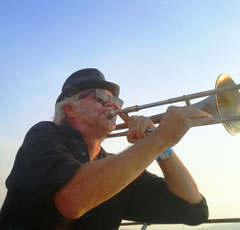
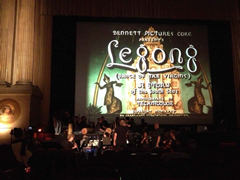
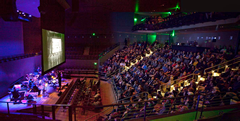
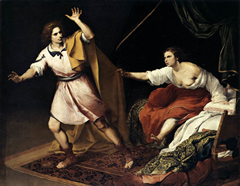
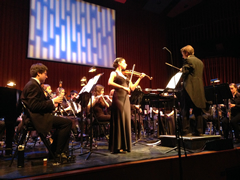
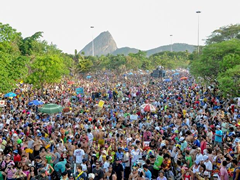
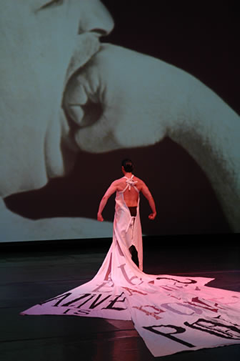
CAREER NARRATIVE I was born October 29, 1951 in Cleveland, Ohio. At six years, I wrote my first song: "Archelon, the Giant Turtle", dedicated to a Mesozoic sea beast, in a style reminiscent of Bizet. The house was always full of big band music and show tunes. My family moved to Minnesota when I was seven and I became involved with choirs (church, high school and All-State), trombone, jazz and rock bands. After hearing Rahsaan Roland Kirk at a Minneapolis jazz club, I also took up the flute. On the way to an expected career in clinical psychology, I walked out of neurophysiology class, during a life affirming display of flatworm splicing. After returning to my room, I put on Boulez's recording of "Le Sacre du Printemps" and my life was altered forever. I changed my classes and studied with Paul Fetler, Domenick Argento and Erik Stokes, and played free jazz all over Minnesota with Blue Freedom's New Art Transformation. One of our more prominent shows had us paired with the Minnesota Orchestra at Northup Auditorium in April 1973. After graduation, I moved to California, where I was a grad student with Pauline Oliveros at UCSD, studied North Indian raga at the feet of Ali Akbar Khan and learned shakuhachi with Masayuki Koga. With the birth of my son in 1980, I enrolled in an electronic technology program, thinking I'd land a job at HP (or something). But fate led me instead to Serge Modular, a synthesizer company on Haight Street in San Francisco. During my employment at Serge Modular Music Systems (1980-82) and with the encouragement of Serge Tchrepnin, I invented the "Modified Casio", in which an installed circuit board allowed the keyboard to be driven by control voltage sources such as an analog synthesizer. A later upgrade used an onboard voltage source and a comparator circuit to switch between the original clock and the voltage-controlled clock. This ability to frequency modulate the Casio resulted in a wealth of bizarrely beautiful sound. Among the musicians who purchased the Modified Casio were Throbbing Gristle (a revolutionary British noise band), Snakefinger, Tuxedo Moon, Don Preston (Mothers of Invention), Erik Drew Feldman (Captain Beefheart), John Adams and many others. The Residents bought three of these instruments, and the sound of the Modified Casio was especially significant on the Residents' "Tale of Two Cities" and "The Mole Show" performances and recordings. In many ways my work foreshadowed the current interest in DIY electronic modifications, then as now an interest propelled by a desire to push the boundaries of sound. In 1982-83 I lived above the Club Foot, a San Francisco art nightclub dedicated to extreme performance. While I resided there, I joined Snakefinger's band and founded Club Foot Orchestra. During Snakefinger's 38-city European tour in 1983 I played trombone, tenor sax and trumpet. After the tour, I travelled in the Middle East, collecting music and instruments. Returning to San Francisco, I resurrected Club Foot Orchestra and wrote some of the most unlikely "club" music ever. Almost totally instrumental, the ensemble juxtaposed atonal funk, Nino Rota-esque waltzes and Red Army choruses with virtuosic canons in 11/8 time. The Club Foot Orchestra released two albums on the Ralph Records label: "Wild Beasts"(1986) and "Kidnapped" (1987). I also started to score independent movies. One of them, "Silver into Gold", directed by Lynn Mueller, was nominated for best documentary at the 1988 Academy Awards. Inspired in part by an odd alignment of television viewing, I decided to score "The Cabinet of Dr Caligari" for the Club Foot Orchestra. I became interested in doing something visually that further expressed the ideas behind the music; something that would help put the music in context. I considered projecting slides of experimental art on a screen behind us. Then a friend suggested, after catching our show: "The music is so cinematic, why don't you score outtakes of 1950s sitcoms." Later that night I saw a Lily Tomlin skit on Saturday Night Live. She was reading the Dow Jones averages of various art trends. She reported, "Pop art up 10... Op art up 20... Expressionism down 30." I turned the channel, and there was The Cabinet of Dr. Caligari. The distorted sets and dreamlike atmosphere in the film were the qualities that I always envisioned accompanying our music. The subversive plot was drenched in the unconscious. I was obsessed to write for that film. The premiere at the 1987 Mill Valley Film Festival was successful, but nothing like the public feeding frenzy which accompanied a week of shows at SF's Roxie Cinema, followed by well-attended shows in Berkeley, Palo Alto and Los Angeles. We received rave reviews in all the papers in the Bay Area and LA. In April 1989, the orchestra performed my score for Nosferatu to great acclaim and crowds at the Castro Theater in San Francisco. We went on tours to Southern California, the Pacific Northwest, the Northeast and to the New Music America Festival in New York (1989). Again there were rave reviews: Neil Tesser wrote in the Chicago Tribune Nov 26, 1989: "The most impressive of these hybrids was the FW Murnau classic 'Nosferatu' -the first Dracula film -with music by the Club Foot Orchestra, a San Francisco group that has pioneered the modern use of live music with silent film. This nine-piece band flawlessly performed a score carefully matched to every piece of on-screen action in what amounts to an hour-long suite of epic proportions." One may ask: "Why do this? Wouldn't it be better to have the original soundtrack?" Well, in many cases there never was a soundtrack, a chamber ensemble might play snatches of Tchaikovsky or Strauss or popular tunes. In other cases, a score may have been written, but the visuals (especially the Expressionist films) have an experimentalism not matched by the "original" music. We sought to write music complimenting the "edge" of the films. For the next three Club Foot Orchestra productions, I both composed and directed other composers in the group to produce a finished score. The score for "Metropolis" was inspired by the philosophy of the Futurists and the machine music of composers like George Antheil. The score for Buster Keaton's "Sherlock Jr." was inspired by the amazing range of music available in America during the 1920s, and we composed within that limitation until the final scene of the car chase, to hilarious effect. We recorded our score for Kino International and it now accompanies screenings of the film on television and on DVD. "Pandora's Box", inspired by the music of Weimar Berlin, was premiered at the 1995 San Francisco Film Festival and our tour that year included a highly successful run at Lincoln Center. Later that year, the Club Foot Orchestra composed and recorded 39 episodes of "The Twisted Tales of Felix the Cat", an animated series that aired on Saturday mornings. In 1993, film director Phil Kaufman contacted me to work on "Rising Sun". Toru Takemitsu had been hired as the composer, however Kaufman wasn't totally happy with his score and wanted me to complete the film. I enjoyed working with Kaufman on the film and experiencing the Hollywood style of filmmaking. From 1992-97, I worked for Atari Games as a staff composer. As I had three children to support at this point, I enjoyed being relieved for a while of the sometimes hand-to-mouth existence of an independent composer. I also relished the close collaboration with programmers, artists and game designers. In the writing of game music, programmatic tools are available which allow very precise interactive control, in which the player's choices determine all aspects of the audio environment. I recognized this to be a potentially revolutionary aspect, one which I used in later compositions. In the early 1990s I also began collaborating with choreographer Della Davidson, and over the years we worked on six evening-length projects until her untimely death in 2012. In 1998, I was approached by the Bay Area gamelan ensemble "Gamelan Sekar Jaya" to collaborate with Indonesian composer Made Subandi and compose a score for "Legong, Dance of the Virgins" a 1933 silent movie filmed in Bali. We scored the film with string quartet, trumpet, clarinet, three different types of Balinese gamelan and Mr. Subandi's traditional vocal artistry. The result was sonically glorious and we performed it to large houses at the Castro Theater and at the World Financial Center's Winter Garden space. The film with our soundtrack is available on Milestone Video. I joined Gamelan Sekar Jaya on their tour of Bali in 2000 and became quite conversant in many aspects of Balinese music and culture, studying with Nyoman Windha, Asnawa, Cok Bagus and Made Subandi, specializing in the suling, an end-blown fipple flute. To further develop my interest in technology, I enrolled in the Multimedia Graduate program at California State University East Bay in 2000. I developed and mounted an interactive opera, entitled "God Machine" in which a program, written in MAX/MSP, would pose questions (about politics and ethics), accept audience response and use this data to sequence the plot elements. Could an intelligent machine possibly achieve self-realization? The elements of the plot were so designed that the meaning of the opera was subtly changed when re- sequenced. In addition, sensors attached to the gamelan instruments controlled the projection of images and sensors attached to the costume of a Balinese dancer controlled processing of instruments and voice. In 2004 I moved to New York and reassembled the Club Foot Orchestra, using musicians from New York and California to perform my freshly written scores for Potemkin and Phantom of the Opera at the World Financial Center in 2005. I rewrote "Metropolis" and performed it with Club Foot Orchestra East at the Morgan Library in June 2009. Randall Kline of SFJAZZ commissioned me to write new material for the extended 128-minute version of Metropolis that was presented in April 2013 as part of the inauguration of their new Miner Auditorium. Using this version of Metropolis as source material, I composed a concerto for violin and wind ensemble that was premiered by the Dartmouth Wind Ensemble in February 2015. I'm in the midst of writing a commissioned piece for Boston's Metropolitan Wind Symphony that will premiere on March 5, 2017. I worked with several New York choreographers. In 2007 I led an ensemble of three musicians from Japan (shakuhachi, taiko and shamisen) three musicians from Macedonia (violin, bass and French Horn/Melodica) and trumpet player Frank London, accompanying Yoshiko Chuma and her School of Hard Knocks in performances at the Dance Theater Workshop. I received a "New Music for Dance" grant from American Music Center with choreographer Yin Mei and composed an hour-long string quartet score for her "City of Paper" in 2009. I've been back in the San Francisco Bay Area since late 2012, and am currently working on a project with choreographer Sara Shelton Mann that will premiere at ODC Theater in late March 2017. In February 2008, Brooklyn visual artist Lesley Dill approached me to compose "Divide Light", an evening length work for chorus, soloists and string quartet based on the language of Emily Dickinson. The piece was presented at the amphitheater of the Montalvo Art Center in Saratoga California on August 13, 2008. This work did not have the overt narrative that we usually associate with opera, but did bring listeners through a rich emotional arc and ended in a cathartic transcendence. In 2012, I began working with librettist Ruth Margraff, dean of the creative writing program at the School of the Art Institute of Chicago, on a chamber opera, "The Passion of Leyla", based on the story of Joseph and the merchant's wife intermixed with Sufi love poetry and the Persian ta'ziyeh theater tradition. Two work-in-progress versions of this piece have been publicly presented, the first in collaboration with Links Hall in Chicago in May 2013, and more recently at California's San Jose Stage Company in August 2016 with support from the National Endowment for the Arts' Theater Program. I'm currently in negotiation for a more fully-staged production of the piece in New York. In June 2016, I received a commissioning grant from the San Francisco Arts Commission to develop and premiere "Voyage", a piece about migration and the factors that drive people out of one place and to another. Voyage will be scored for Balinese Gamelan and a suite of western instruments. I will collaborate with Made Subandi, and will spend four weeks in Bali studying and gathering musical ideas for the composition in December 2016. The piece is slated to premiere at San Francisco's Fort Mason Center as part of the SF International Arts Festival on May 31, 2017.
|